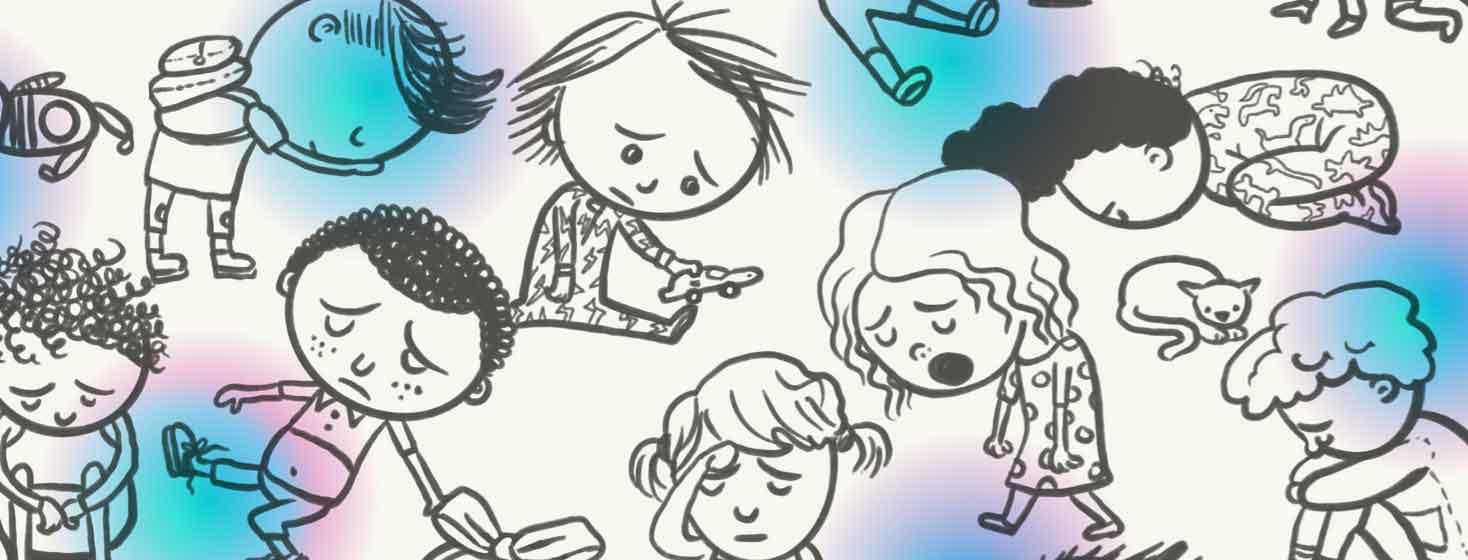Community Spotlight: Glycogen Storage Diseases
Glucose is an important sugar that bodies need for energy. The body packs small molecules of glucose into large molecules called glycogen. Glycogen is stored in the cells of the liver and muscles. When the body needs energy, enzymes break down glycogen into glucose and send it to where it is needed in the body.1
What is glycogen storage disease?
People living with a glycogen storage disease (GSD) are missing one of the enzymes involved in breaking down glycogen into glucose. These enzymes work in different organs of the body. Lacking one of these enzymes can cause too much glycogen to build up, which can damage that organ and keep it from doing its job.2
A common symptom of these diseases is low blood sugar, or hypoglycemia. This is because the liver uses many enzymes to break down glycogen between meals. If a person is missing one of those enzymes, their liver cannot create glucose to balance their blood sugar. Also, glycogen builds up and can damage their liver.1
Other common symptoms are muscle cramps, muscle weakness, and difficulty exercising for long periods. This is because muscles break down a lot of glycogen to use the glucose for energy. When someone is unable to get the glucose their muscles need because of a missing enzyme, muscle problems occur.3
Currently, there are no cures for glycogen storage diseases. Some forms of the disease and their side effects can be managed with diet and medicines to some degree.1
Who gets glycogen storage diseases?
Glycogen storage diseases are passed down through families and inherited at birth. Those living with these conditions may start to show symptoms anywhere between infancy and adulthood. This varies according to the kind of GSD someone has. It varies because glycogen buildup affects each organ slightly differently. Also, symptoms like muscle weakness during exercise might not occur until a child is old enough to be active.3
What are the types of glycogen storage disease?
There are several types of GSDs. Each type is caused by a lack of a different enzyme. Each type is known by a number, and some types are known by other names as well. GSD types are further divided into subtypes and organized by which organs or tissues are affected.4
GSD 0
This type of GSD affects the liver or muscles. It can cause low blood sugar in between meals.4
GSD I (1)
Also known as von Gierke disease, type 1 is divided into 2 subtypes: 1a and 1b. Type 1a affects the liver and kidneys. These organs can grow very large, and this can cause low blood sugar and high levels of acids, fats, and uric acid in the blood.4
Type 1b affects the liver and white blood cells. It is very similar to type 1a. But because it affects white blood cells, a person with it may be more likely to have infections or inflammatory bowel disease (IBD).4
GSD II (2)
Type 2, or Pompe disease, affects every organ in the body. It can cause an enlarged heart and liver. It also can cause muscle weakness.4
GSD III (3)
Also known as Cori disease or Forbes disease, type 3 affects the liver, muscles, and heart. It can cause an enlarged or damaged liver, heart damage, muscle damage, and low blood sugar.4
GSD IV (4)
This type of GSD, sometimes called Andersen disease, affects the liver, muscles, and most tissues. It can cause liver and muscle damage. It also can delay development in a child.4
GSD V (5)
Type 5, or McArdle disease, affects the muscles. It can cause muscle cramps or weakness while exercising.4
GSD VI (6)
Type 6, or Hers disease, affects the liver. It can cause an enlarged liver or low blood sugar. Often, people with type 6 have no symptoms at all.4
GSD VII (7)
Also called Tarui disease, type 7 affects the muscle and red blood cells. It can cause muscle cramps and red blood cell breakdown (hemolysis).4
GSD VIII and IX (8 and 9)
These types of GSD affect the liver and kidneys. They can cause an enlarged liver, kidney damage, low blood sugar, and weak bones.4
How is glycogen storage disease diagnosed?
Most babies are screened for GSD 2/Pompe disease in the hospital at birth. Other types of GSD are diagnosed through blood tests or genetic tests when infants or children have begun to show symptoms. Symptoms can include:1,2
- Hypoglycemia
- Muscle cramps
- Slow growth
- Bruising easily
- Swollen belly (a sign of an enlarged liver)
If you think you or your child may have a GSD, talk to your doctor.

Join the conversation